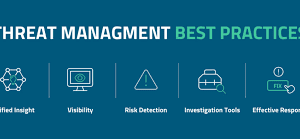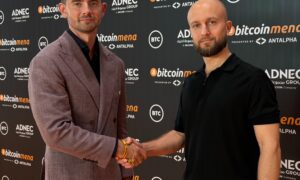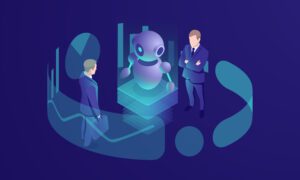How Do Top-Performing Businesses Foster Innovation in their Management Approach?
In a world where innovation is the cornerstone of success, top-performing businesses constantly seek ways to revolutionize their management approaches. This article delves into proven strategies, enriched by insights from industry experts, for cultivating a fertile environment for innovation. Discover how embracing agile development, fostering expert-driven initiatives, and celebrating collaborative failures can propel a company to new heights.
- Foster Innovation with Agile Development
- Empower Experts to Drive Innovation
- Host Failure Fests for Collaborative Innovation
- Encourage Hack-A-Week for New Ideas
- Involve All Staff in Problem-Solving
- Prioritize Open Ideation and Test Learn
- Reverse Mentorship Mondays for Fresh Perspectives
- Optimize Routes with AI and Employee Input
- Cross-Functional Collaboration for Innovation
- Flexible Workflow with Self-Optimization Goals
- Launch Fast, Optimize Later
- Pro-Experiment Policy for Breakthrough Ideas
- Encourage Experimentation and Cross-Team Knowledge Sharing
- Empower Teams with Autonomy and Cutting-Edge Tech
- Pitch Bold Ideas with Moonshot Mentality
- Leverage Team Feedback for Continuous Improvement
- Innovation Mondays for New Ideas
Foster Innovation with Agile Development
Our approach to management and innovation at Nova Insights is deeply intertwined with the principles of agile development and a strong belief in the transformative power of AI. We’ve built a culture where continuous improvement is not just encouraged, it’s baked into our DNA. A prime example of this is how we manage the development and deployment of our AI agent platform.
Instead of traditional top-down management, we utilize a decentralized, pod-based structure. Each pod is a cross-functional team that owns a specific piece of the AI agent platform, from development to testing and deployment. This fosters a sense of ownership and accountability that drives innovation. They are empowered to experiment, iterate, and make decisions quickly, mirroring the agile nature of AI development itself.
Furthermore, we’ve implemented a “fail-fast, learn-faster” philosophy. We understand that working at the cutting edge of AI in healthcare means encountering challenges and setbacks. Instead of penalizing “failures,” we view them as valuable learning opportunities. We analyze what worked, what didn’t, and, crucially, why. This data-driven approach allows us to continually refine our processes and improve the AI agent’s performance and safety.
Specifically, several strategies contribute to this culture of continuous improvement:
- Data-Driven Decision Making: We leverage analytics at every level. Pods track key metrics related to agent performance, user engagement, and clinical outcomes. This data informs their development roadmap and helps prioritize features.
- Open Communication Channels: We foster transparency and open communication. Pods regularly share their progress, challenges, and learnings with each other and leadership. This cross-pollination of ideas sparks further innovation and helps avoid redundant efforts.
- Dedicated Innovation Time: Each pod dedicates a percentage of their time to exploring new ideas and experimenting with emerging technologies. This “innovation time” allows our teams to push the boundaries of what’s possible with AI agents in healthcare.
- External Collaboration: We actively engage with the broader healthcare and AI community. This keeps us abreast of the latest advancements and ensures our work is aligned with industry best practices and ethical considerations.
Ultimately, our management approach is designed to mirror the iterative and adaptive nature of AI itself.
Howard Rosen, CEO, Nova Insights
Empower Experts to Drive Innovation
We foster innovation in management by employing subject matter experts in their chosen fields. As Steve Jobs famously said, “You don’t hire smart people and tell them what to do; you hire smart people to tell you what to do.” We embrace this philosophy alongside the belief that if you’re the smartest person in the room, you’re in the wrong room.
As a leader, my responsibility is to bring in the best talent and create a culture that enables them to leverage their expertise. Unlike traditional transformation approaches that are often technology-led, we ensure transformation is driven by the business, aligning people, processes, and technology to deliver real, measurable results.
Our strategy for fostering a culture of continuous improvement is built on:
- Empowering experts to drive innovation rather than dictate solutions from the top.
- Business-led transformation, ensuring changes are aligned with business needs, not just technology trends.
- Agile thinking, encouraging adaptability, feedback loops, and iterative delivery.
This approach ensures that we not only lead but reshape the business transformation landscape, setting a new standard for how organizations successfully transform.
Heath Gascoigne, Founder & CEO, HOBA Tech
Host Failure Fests for Collaborative Innovation
Host quarterly “Failure Fests”—structured sessions where teams share projects that missed the mark, dissect why, and crowdsource improvements. This flips setbacks into collaborative innovation fuel.
We noticed teams were playing it safe to avoid blame. To break this, we launched Failure Fests. One example: Our product team shared a scrapped AI chatbot tool that initially misinterpreted user intent. During the session, the content team suggested retraining it with customer service transcripts, and sales proposed testing it as a lead-qualifying assistant. The relaunch became a top-performing feature.
Key strategies:
- Psychological safety first – leaders share their own missteps to set the tone.
- Bias toward action – every failure discussed must spawn at least one new experiment.
- Cross-pollination – mix departments (e.g., devs + content + SEO) to spark unexpected solutions.
The result? Teams now pitch riskier ideas, knowing there’s a system to salvage learnings. Client services even adopted the practice, hosting post-mortems with clients to co-improve campaigns.
How do you balance structured reflection without overloading teams? We’re testing shorter, biweekly meets focused on rapid tweaks vs. deep post-mortems.
Innovation isn’t about flawless ideas—it’s about creating a loop where failures become shared stepping stones.
Start small: Add a section to your next team meeting agenda and watch curiosity replace caution.
Aaron Whittaker, VP of Demand Generation & Marketing, Thrive Digital Marketing Agency
Encourage Hack-A-Week for New Ideas
Fostering innovation isn’t a buzzword; it’s part of how we run things every day. I remember early on, one of our team members suggested a kind of “hack-a-week” concept where everyone, regardless of role, could propose and prototype new ideas for our processes or services. One week, this approach led to a better way of visualizing valuation models in pitch decks, something our clients loved because it simplified a complex topic. I’ve seen how rigid hierarchies can stifle creativity, so we ensure that ideas flow freely by keeping decisions collaborative, but ownership clear. One of our strategies is borrowing from OKR principles I studied during my Agile Leadership certification. Every quarter, our team sets ambitious yet measurable goals, with a specific focus on experimenting and iterating on something new.
The key to continuous improvement, I’ve realized, is creating an environment where making mistakes is not just tolerated but encouraged if it means learning something valuable. I still laugh about the time we tried automating a complex part of due diligence and broke everything for a week—it was chaotic, but the lessons we took from it now save us hours every month. This mindset of iterating even when things aren’t broken is something I brought with me from BMW Startup Garage, where startups were constantly rethinking their solutions. At its heart, fostering innovation means empowering everyone to think and act like founders—creative, curious, and always questioning the status quo. That, more than any specific tool or strategy, is what keeps us improving.
Niclas Schlopsna, Managing Consultant and CEO, spectup
Involve All Staff in Problem-Solving
We foster innovation in our management approach by encouraging open collaboration and leveraging technology to streamline operations. One key strategy we use is involving both field technicians and office staff in problem-solving discussions. For example, when we noticed inefficiencies in scheduling and dispatch, we brought together our technicians, customer service reps, and managers to brainstorm solutions. This led us to implement dynamic scheduling software that optimizes technician routes in real-time, reducing travel time and improving service efficiency.
Another strategy that contributes to a culture of continuous improvement is our commitment to ongoing training and feedback loops. We conduct regular performance reviews where employees not only receive feedback but also provide input on what tools or processes could make their jobs easier. Additionally, we hold monthly innovation meetings where team members can pitch ideas for improving workflow, customer experience, or job site efficiency. By creating an environment where employees at all levels feel empowered to contribute ideas, we ensure that our company stays ahead of industry trends while fostering a culture of engagement and innovation.
Dan Simpson, Owner, Air Treatment Heating & Cooling
Prioritize Open Ideation and Test Learn
Fostering innovation isn’t just a goal—it’s embedded in how we lead. We believe that great ideas come from empowered teams, so we’ve built a culture that prioritizes collaboration, creativity, and continuous learning.
One way we drive innovation is through our “Open Ideation” model, where employees at all levels contribute ideas—whether for a client campaign, operational efficiency, or internal processes. For example, a recent internal brainstorm led to a new engagement strategy that significantly boosted client retention. By ensuring every voice is heard, we harness diverse perspectives to develop breakthrough solutions.
We also embrace a “Test and Learn” approach, encouraging calculated risks and iterative improvements. Rather than relying on traditional methods, we analyze real-time data, adapt strategies quickly, and refine our approach based on insights. This has led to more agile, effective marketing solutions for our clients—like a recent pilot program that doubled consumer engagement before full-scale rollout.
Beyond these frameworks, we invest heavily in professional development—mentorship programs, industry workshops, and cross-functional collaboration—to keep our teams ahead of trends and bring fresh thinking to the table.
At the core of our philosophy is curiosity, adaptability, and trust. By fostering an environment where teams feel empowered to experiment and challenge norms, we remain at the forefront of marketing innovation.
Kim Lawton, Founder and CEO, Enthuse Marketing Group
Reverse Mentorship Mondays for Fresh Perspectives
Innovation is crucial for us—especially as a fully remote team—and I wanted to share an approach we use in our management style that might catch you off guard.
We have a concept we call “Reverse Mentorship Mondays.” It’s exactly what it sounds like: every Monday, junior team members or interns become the de facto “mentors” for their assigned executives or senior leads. They get to pick the topic—maybe it’s a fresh social media trend, a new AI tool, or a cultural phenomenon shaping user behavior. The idea is that those of us who are more experienced often carry our own blind spots, so flipping the mentorship role breaks the status quo. It’s been stunning how many improvements and new product directions have come from hearing fresh perspectives unfiltered.
Another strategy is what we call the “Failure Swap.” Instead of the usual weekly successes, each team highlights one small failure in an open forum. But here’s the twist: we then hand that failure over to a different department to brainstorm solutions. For example, our marketing team once “failed” to get traction on a particular campaign, so the product team took it on. They saw the user journey differently and introduced an interactive quiz element that turned the campaign around. This cross-pollination helps us sidestep the rut of a single team repeatedly problem-solving in the same ways and fosters a genuinely dynamic culture of continuous improvement.
Lastly, we actively encourage our team to devote a set portion of the workweek to “Wild Experiments,” which are mini-projects that don’t need direct approval from upper management. People can prototype an unconventional landing page, test out a new audio-processing approach, or experiment with content in an unexpected format. Everyone knows that some of these wild ideas will flop—and that’s okay. The point is to make innovation a natural reflex, not a once-a-quarter directive.
Derek Pankaew, CEO & Founder, Listening.com
Optimize Routes with AI and Employee Input
Fostering innovation in waste management starts with a data-driven, efficiency-focused approach that aligns sustainability with operational excellence. One example of how we drive innovation is through the integration of route optimization technology and AI-driven waste analytics to improve service efficiency and reduce environmental impact.
Key Strategies Driving Innovation & Continuous Improvement:
1. Technology-Driven Route Optimization
- We utilize GPS and AI-powered logistics software to analyze traffic patterns, collection density, and customer service histories.
- This has led to a 15% reduction in fuel consumption and a 20% decrease in service delays, improving efficiency while lowering emissions.
2. Employee-Led Process Improvement Initiatives
- We empower frontline employees—drivers, waste sorters, and logistics teams—to identify inefficiencies and propose solutions.
- Through structured feedback sessions, we’ve implemented practical changes, such as improving landfill queue management, cutting wait times by 30%.
3. Sustainability Innovation Through Circular Waste Solutions
- We collaborate with municipalities and businesses to develop customized recycling and waste diversion programs tailored to specific waste streams.
- One initiative led to a 35% increase in recyclable material recovery at industrial client sites by refining waste stream separation processes.
4. Culture of Data-Backed Decision-Making
- We track key performance indicators (KPIs) such as landfill diversion rates, customer feedback, and fuel efficiency to continuously refine operations.
- Monthly performance reviews help us stay agile, allowing us to quickly adapt to market changes and customer needs.
By embracing technology, employee engagement, and sustainability-driven innovation, we’ve built a culture of continuous improvement that ensures we remain at the forefront of responsible and efficient waste management.
John Gustafson, Founder, President & CEO, Frontier Waste Solutions
Cross-Functional Collaboration for Innovation
We encourage our management to be innovative which also means allowing our team to have the freedom to question existing processes and try new ones. We encourage cross-functional collaboration and data-driven decision-making as one of the ways we do this. Rather than a set of back-to-back top-down directives, we invite teams from operations, technology, and customer service to collaborate on cracking complex logistics problems.
One good example of this was when we observed that shipment tracking and customer communication were not efficient, we built a system that simplified that. So rather than doing an incremental improvement of our existing system, we decided to run an internal innovation challenge, asking everyone to submit ideas of how we could improve real-time shipment visibility. This resulted in the creation of an AI-powered tracking system that decreased manual status updates by 60%, provided more transparency for our customers, and gave our team time to pursue other, more valuable activities.
To nurture a continuous improvement culture, we’ve also built regular feedback loops between employees and clients to gather input on workflow improvements and service enhancements. We borrow from agile project management, using features that new ideas are tested in small, controlled environments until they prove themselves worthy of full implementation. Keeping flexible, data-led, and collaborative has allowed us to respond to industry disruptions and continuously fine-tune our operations for improved, cost-effective logistics solutions.
Robert Khachatryan, CEO and founder, Freight Right Global Logistics
Flexible Workflow with Self-Optimization Goals
Innovation in management does not have to be about big, disruptive changes. It is often about small, continuous refinements. Our team operates with a flexible workflow model where employees set their own optimization goals each quarter. Instead of rigid performance metrics, they choose a part of their role they want to improve, experiment with new methods, and track results. One of our strategists tested a different content clustering approach for SEO. After seeing better rankings and engagement, we adapted it across multiple clients.
This approach keeps our work evolving without relying on top-down mandates. The key is giving people the space to test new strategies without fear of failure. Every experiment, whether successful or not, becomes a learning opportunity that moves us forward. By shifting from traditional KPI-driven management to an experimentation mindset, we ensure that improvement is not just encouraged; it becomes a core part of how we operate.
Sean Clancy, Managing Director, SEO Gold Coast
Launch Fast, Optimize Later
At our company, we foster innovation through a “launch fast, optimize later” mentality. We believe in moving quickly and testing ideas in real time, rather than spending excessive time perfecting every detail upfront. This approach encourages agility and adaptability, ensuring that we stay responsive to market needs and customer feedback.
Here’s how it works in practice: When launching a new personality test or product, we don’t overthink the initial design or user experience. For example, we might launch a basic landing page for a new test, without focusing on perfect aesthetics. The primary goal is to validate demand. We run targeted ads to gauge interest and collect initial user feedback. This allows us to quickly assess whether there’s genuine demand for the product before we invest in more resources.
If the ads show positive results and customers engage with the test, we immediately begin iterating and improving the entire experience. This might involve enhancing the landing page, improving the user interface, or expanding the marketing materials. We prioritize continuous improvement based on actual data and real-world usage, rather than relying on assumptions.
This method allows us to stay nimble, make decisions based on customer behavior, and quickly pivot when necessary. It also helps to minimize risk, as we only invest more time and resources into projects that have proven demand. By embracing this culture of speed and iteration, we continuously innovate and evolve our offerings, ensuring that we stay competitive in a fast-changing market. This process empowers our team to take risks, experiment, and consistently improve based on real-world feedback.
Mariana Gomes, Founder, Personality Quizzes
Pro-Experiment Policy for Breakthrough Ideas
We don’t just talk about innovation. We create an environment where it happens naturally. Our strategy is simple: give people the freedom to think, act, and take responsibility for their ideas.
One of our key approaches is a pro-experiment policy. We encourage employees to test new work methods, propose unconventional solutions, and if something doesn’t work out, it’s not a reason for criticism but an opportunity to learn. This is how truly breakthrough ideas are born.
Another essential strategy is continuous learning. We invest in our team’s growth by reimbursing language courses, supporting conference participation, and inviting experts for internal workshops. This fosters a culture of constant development, both for individuals and the company as a whole.
Finally, we prioritize openness. There is no hierarchical barrier between leadership and the team. For example, if junior specialists see opportunities to improve some processes, they can suggest it directly. We value initiative because the best solutions often come not from the top down but from the team’s real experiences.
Alexandr Korshykov, Founder & CEO, DreamX
Encourage Experimentation and Cross-Team Knowledge Sharing
In our B2B startup, fostering innovation in our management approach comes down to staying agile and data-driven. We encourage experimentation by giving teams the freedom to test new ideas, whether it’s in marketing, tech, or customer experience. Instead of rigid processes, we focus on structured iteration, small changes, tested quickly, and adjusted based on performance.
Another big part of our culture of continuous improvement is regular cross-team knowledge sharing. Marketing, sales, and customer success teams meet frequently to exchange insights, ensuring that feedback from real customers informs our strategies. For example, after noticing a recurring question in support tickets, we adjusted our onboarding emails, reducing confusion and improving engagement. We also prioritize transparency in goal-setting. Every department knows how their work contributes to company-wide objectives, which helps drive accountability and creativity.
Mads Viborg Jørgensen, CEO and Co-Founder, PatentRenewal.com
Empower Teams with Autonomy and Cutting-Edge Tech
Innovation isn’t just a buzzword—it’s woven into how we lead, scale, and evolve. We cultivate a culture of empowerment where teams have the autonomy to own their projects, make data-driven decisions, and push boundaries. By embracing an agile mindset and leveraging cutting-edge technology, we ensure our management approach is as dynamic as the industries we serve.
Our teams thrive on collaboration and continuous learning. Through internal training programs, tech talks, and mentorship, we keep our engineers and product experts at the forefront of industry advancements.
Beyond process optimization, we invest heavily in experimenting with AI, machine learning, blockchain, and AR/VR to explore the future of tech. By testing and iterating internally, we empower our clients with proven, next-gen solutions that deliver real-world impact.
Marc Karasu, Chief Marketing Officer, Vention
Pitch Bold Ideas with Moonshot Mentality
We use the moonshot mentality. At each relevant discussion, we encourage all to pitch bold and unconventional ideas without constraints regardless of how impossible they may be on paper. We all know that these discussions are not meant for instant execution but to just be experimental with our approach. The biggest benefit of this approach, at least for us, is that we can pick out minute details about what starts out as an out-of-the-box concept through feedback and turn it into a feasible and innovative solution.
Matthew Franzyshen, Business Development Manager, Ascendant Technologies, Inc.
Leverage Team Feedback for Continuous Improvement
Cultivating a culture of continuous improvement within an organization, department, or team can be a challenging and ongoing endeavor. However, the rewards are well worth the effort, leading to substantial opportunities and positive change—and it starts from the top.
Continuous improvement provides many benefits, but if not managed effectively, it can result in chaos and confusion.
When teams perceive constant change, the state many people see unmanaged continuous improvement efforts as fleeting or refuse to accept it, waiting for the next change, it becomes counterproductive—waiting for the flavor of the week to change.
This highlights the need for a thoughtful approach to continuous improvement.
Successful Strategies
- Leverage Team Feedback and Engagement: Encourage team members to share their thoughts and ideas, fostering a sense of ownership and engagement.
- Embrace a Growth Mindset: Communicate that nothing is set in stone, and improvements are ongoing.
- Post-Change Feedback and Evaluation: Hold meetings to gather feedback and identify areas for further improvement.
- Empower Team Members: Encourage and reward individuals who bring new ideas and solutions, promoting a grassroots approach to improvement.
- Nurture Continuous Improvement Loops: Establish a regular cycle of feedback, evaluation, and implementation to sustain momentum.
- Lead By Example: Leadership needs to take control of the continuous improvement efforts and create the culture where controlled change is accepted and welcomed, where failure is seen as growth opportunities and where employees are engaged to be part of the change from the beginning.
Implementing these strategies, organizations can create a culture of continuous improvement, where change is embraced as a collective effort, a business differentiator, driving sustainable growth and success.
Joseph Braithwaite, Managing Partner, RE:INVENTION
Innovation Mondays for New Ideas
Old ways of managing can stop new ideas. When teams feel stuck in strict rules—creativity disappears. However, when people have the freedom to think differently, amazing things happen in and outside of the office. Innovation is not just about new shining products. It helps businesses stay strong and keeps employees excited about their work.
We start the week with “Innovation Mondays.” Every Monday afternoon, our teams take a break from regular tasks to explore new ideas. Recently, David from the accounting department suggested a better way to communicate with clients. It showed that when people feel free to share, even a junior accountant can help improve the business.
How We Make It Work:
- We start by listening. Every Monday standup begins with, “What’s broken?”—encouraging honest feedback.
- Our “No Bad Ideas” policy means every recommendation gets proper respect.
- We change team leaders monthly to bring fresh views.
- We see failures as lessons, not problems.
The secret? “Trust Your People.” When we stopped controlling every detail and started empowering our teams, innovation became natural. Now, it is a part of who we are—not just a task on a to-do list.
Jan Lutz, Director HR | co-founder, Global SustainabilityJobs List
Related Articles
- How to Foster a Culture of Innovation in Your Organization
- Building a Culture of Innovation: Lessons from the Most Innovative
- Revolutionizing Business Strategies with Data-Driven Decision Making



































